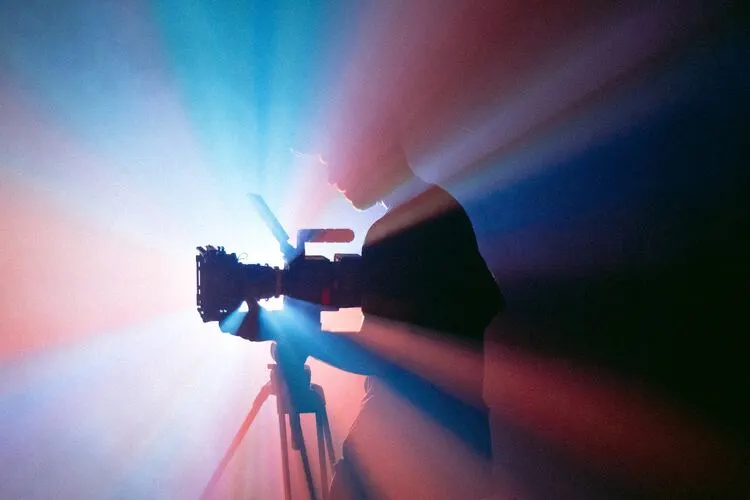New Movie Technologies That Are Changing the Face of Filmmaking
As Americans, we’re used to watching blockbuster films with stunning visuals and engaging stories. But in recent years, a new crop of movie technologies has come about that are revolutionizing the way movies are made – making filmmaking more accessible than ever before!
Even a student can start taking his or her first steps in the film industry, and it doesn’t always require reading the guide on $1,000 credit card limit no deposit to rent equipment.
From virtual production tools that allow filmmakers to see their scenes play out through moving characters and special effects in real-time on set to high-tech cameras and post-production options allowing directors to capture shots they could never have before – today’s modern movie technologies represent just the beginning of what is possible.

In this article, we’ll look at some of these exciting technologies that are changing the face of filmmaking.
An Overview of Movie Technologies
The film industry is constantly evolving, and with the emergence of new technologies, it is transforming at a faster pace than ever before. From virtual reality to artificial intelligence, filmmakers are using innovative technologies to create immersive and unforgettable experiences for audiences. In 2018 alone, 873 films were released, the highest number since 2000.

The use of CGI, or computer-generated imagery, has become more advanced and sophisticated, allowing filmmakers to create stunning visual effects that were once impossible to achieve.
Similarly, motion capture technology has revolutionized the way actors perform, enabling them to bring digital characters to life in a way that feels authentic and natural.
With new technologies constantly being developed and refined, it’s an exciting time for both filmmakers and movie-goers alike, as the possibilities for storytelling are endless.
4K Resolution – What Does It Mean and How Does It Benefit Filmmakers
In recent years, the term “4K resolution” has become increasingly common in the world of filmmaking. But what exactly does it mean, and why is it so important? In simple terms, 4K resolution refers to a display that has approximately 4,000 pixels across its width.
This high number of pixels results in incredibly crisp and clear images that are far superior to those produced by standard high-definition displays.
For filmmakers, this means the ability to capture and produce footage with unprecedented detail and clarity, allowing them to create stunningly immersive visual experiences for their audiences. Whether you’re a professional filmmaker or a casual moviegoer, the benefits of 4K resolution are clear — it’s the future of visual entertainment.
High Frame Rates – What Is the Impact on Movies
High frame rates have been a buzzword in the film industry for quite some time now. Essentially, a high frame rate is the number of frames played per second in a movie.
Traditional movies are filmed at a standard 24 frames per second, whereas high frame-rate movies can go up to 120 frames per second. But what impact does this have on movies?
Well, for starters, higher frame rates can make action scenes appear smoother and more realistic. However, some argue that it can also make movies look too “real” and take away from the cinematic experience.
It’s ultimately up to each individual viewer to decide for themselves whether they prefer the traditional 24 fps or the new high frame rates.
Virtual Production – How Are Directors Taking Storytelling to the Next Level
Virtual production has truly revolutionized the way directors approach storytelling. The technology used in virtual production allows for unprecedented creative freedom, ultimately translating into more engrossing and immersive narratives.
With virtual production, directors can easily place their characters in virtual sets, which look and feel like the real thing. This, coupled with the ability to manipulate and change these virtual environments in real-time, allows for an unparalleled degree of control over the narrative.
As a result, virtual production has opened up a whole new world of possibilities for storytellers looking to take their craft to the next level. From epic sci-fi adventures to intimate character dramas, there’s nothing that can’t be achieved with the power of virtual production.
CGI – How Special Effects Have Reached a New Level of Realism
From the motion picture “Jurassic Park” to “Avengers: Endgame,” it’s impossible not to marvel at how special effects have evolved over the years. Computer-generated imagery, or CGI, has taken movies, TV shows, and other visual media to a whole new level by making the impossible possible.
Thanks to advancements in technology over the past few decades, special effects have reached a level of realism that was once unimaginable.
From lifelike creatures with realistic movements to stunningly-detailed settings, CGI is helping filmmakers and other creatives bring their visions to life in once-impossible ways.
As technology continues to improve, who knows what amazing visual experiences we can expect to see in the future?
Immersive Audio – How Surround Sound Technology is Enhancing the Audience Experience
Immersive audio has changed the game when it comes to enhancing the audience experience. Surround sound technology creates a complete audio experience by placing sounds around the listener, making the experience much more enjoyable and realistic.
With immersive audio, viewers are transported to another world, whether it’s a movie theater or their own living room. They can hear every detail, every rustle, and every sigh, making the experience feel more authentic. Immersive audio also creates a more engaging experience, as it draws viewers in and makes them feel like they are a part of the action.
With this technology, viewers can fully immerse themselves in the story and feel like they are active participants in the narrative.
Conclusion
Overall, the film industry is being changed simply by the available technology. From 4K resolution to high frame rates, virtual production, and CGI, filmmaking has become a much more immersive experience for both filmmakers and audiences.
The ability to view movies in crisp detail with dynamic audio makes it even easier to appreciate the art form of filmmaking. There’s such a great level of realism that it almost transports us into a cinematic world we never knew before!
With these new companies and technologies paving the way for larger-scale projects and leading trends in creating an amazing movie-watching experience, there’s no better time than now to enjoy all they have to offer.






